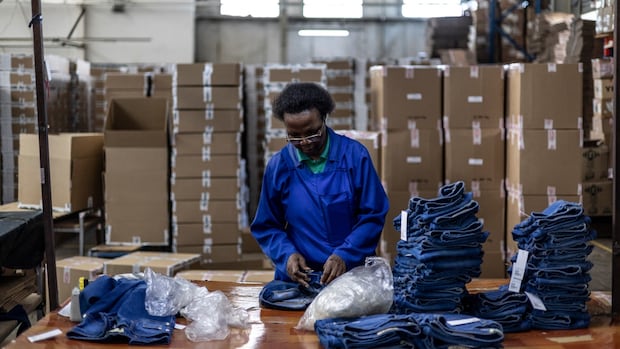Lesotho scrambled to put together a delegation on Friday to head to Washington to engage with the United States on tariffs that risk wiping out nearly half of its exports, its trade minister said, in what could be a death blow to its economy.
The 50 per cent reciprocal trade tariff on the tiny southern African mountain kingdom was the highest levy on U.S. President Donald Trump’s list of target economies.
“The latest policy direction undertaken by the United States is shocking,” Trade Minister Mokhethi Shelile told parliament on Friday, adding that 45 per cent of its exports went to the United States.
He said that officials had already engaged the U.S. embassy “to clarify and how, why Lesotho was included in the list of … such high reciprocal tariffs.”
Trump on Wednesday hit America’s global trading partners with tariffs, upending decades of rules-based trade that campaigners have long said is exceptionally favourable to rich countries like the United States. The rationale for the specific tariff rate has not been delineated by the White House, though theories of how the rates were calculated have emerged.
Encircled by South Africa, the kingdom of two million people is one of the world’s poorest countries, with GDP per capita of $916 US in 2023, according to World Bank figures.
Lesotho’s exports to the United States, mostly textiles for popular brands such as Levi’s jeans as well as diamonds, represented more than one-tenth of the country’s GDP.
“The 50 per cent reciprocal tariff introduced by the U.S. government is going to kill the textile and apparel sector in Lesotho,” Thabo Qhesi, a Maseru-based independent economic analyst, told Reuters.
American exports to Lesotho in 2024 were $2.8 million, according to U.S. government figures. U.S. goods imports from Lesotho in 2024 were $237.3 million, up from 2023, but less than in many recent years, when the figure hovered near or above the $300-million mark.
According to the Observatory of Economic Complexity, delivery trucks, vaccines and food preparation machinery made up the bulk of American exports to Lesotho in 2023.
Previous pain from USAID cuts
Oxford Economics said the textile sector, with some 40,000 workers, was Lesotho’s biggest private employer and accounted for roughly 90 per cent of manufacturing employment and exports.
“Then you are having retailers who are selling food. And then you have residential property owners who are renting houses for the workers. So this means if the closure of factories were to happen, the industry is going to die and there will be multiplier effects,” Qhesi said.
U.S. President Donald Trump’s sweeping ‘Liberation Day’ reciprocal tariffs were described as ‘meticulously planned,’ but among the targets are the landlocked African nation of Lesotho, an island home to a U.S. airbase, and Australia’s Heard Island and McDonald Islands — where most residents are penguins.
Shelile, the minister, said Lesotho is assembling a high-level delegation to the United States. In the medium term, he said, the kingdom would “increase efforts to export to alternative markets such as the European Union and the Africa free continental trade area.”
Lesotho was previously impacted by the Trump administration’s change in philosophy from previous administrations with respect to foreign aid.
Its foreign minister told Reuters last month that the country, which has one of the highest HIV/AIDS infection rates in the world, was already feeling the impact of the United States Agency for International Development (USAID) cuts as its health sector had been reliant on them.
Trump, in an address to Congress last month, decried some of the aid that had previously been earmarked for Lesotho, characterizing at as an “African nation” that “no one has ever heard of.” Laughter from Republican lawmakers could be heard in the House of Representatives chamber after his comment.

